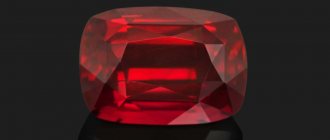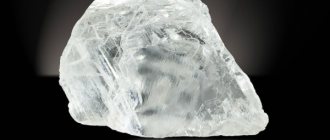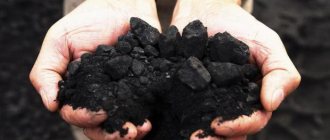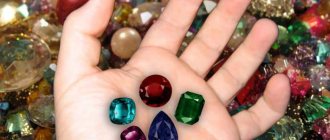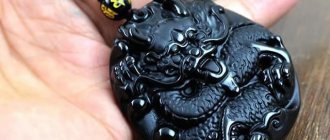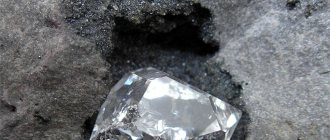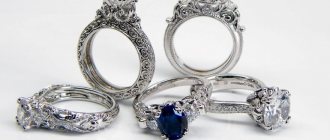Scientists have found rocks on the surface of the Earth that are 4.3 billion years old
The age of planet Earth, according to modern data, is 4.567 billion years. However, the indomitable tectonic activity in the bowels of the planet has left us virtually no evidence of the first days of the existence of the earth's crust.
Therefore, geologists seeking to uncover the secrets of the formation of the planet have to be content only with inclusion granules with an age of up to 4.3 billion years in relatively young rocks. The oldest large blocks of minerals known so far are still four hundred million years younger.
At the same time, understanding the entire history of the geological evolution of the Earth today invariably rests on the lack of any data about the very first millions of years of the planet’s existence.
Therefore, geochemists continue to search for ancient sections of the earth’s crust, even if they are fairly battered by the vicissitudes of a difficult geological fate. Another similar discovery was presented to the world by a team of geochemists who published an article
in the latest issue of the journal Science. The Nuvvuagituk rocks, green rocks located in the northern part of the Canadian province of Quebec, in Hudson Bay, have long been of interest to hunters dating back to ancient geology.
Scientists are now confident that these ancient stones represent the oldest sample of the earth's crust known to science.
All of their peers had already been completely or partially recycled into the mantle, and for the most part remained completely in the bowels of the Earth, never appearing on the surface again.
close
100%
Determining the age of crustal rocks is always based on measuring the ratio of isotopes of chemical elements. Some of them are radioactive, so over time they decay and turn into stable isotopes of other elements. Thus, in rocks of different origins, excess or insufficient ratios of certain isotopes are formed, which can tell about their age.
Jonathan O'Neill of James McGill University in Montreal, Canada, geochemist Richard Carlson of the Carnegie Institution and their colleagues relied on the neodymium-samarium ratio to determine the age of rocks.
The radioactive family 146Sm/142Nd has a very short half-life - only 103 million years, and therefore the decay of radioactive samarium-146 should have ended 4.1–4.2 billion years ago and gave the same ratio of stable neodymium isotopes 142 and 144 in all terrestrial breeds In fact, this ratio in ancient Canadian rocks is slightly different from that in all other rocks of the earth's crust. It has become possible to discern this difference only now, with the advent of new analytical techniques, and it is this difference, the so-called negative anomaly of neodymium, that is, a reduced content of 142Nd relative to 144Nd, that allows scientists to conclude the very ancient age of the stones.
Chondrites
meteorites of the simplest chemical composition: a homogeneous mixture of light (sulfur, oxygen) and heavy (nickel, iron) elements. Scientists first encountered them while studying meteorites found on the Earth's surface. According to modern theory...
The fact is that, according to modern theory, the Earth and all the terrestrial planets were formed from such a substance, brought to earth now only in the form of chondrite meteorites. In the past, a huge agglomeration of such stones created the Earth, Venus, Mars and Mercury. The “primordial” composition of the Earth has long been identified with the chemical composition of chondrites, but in the last ten years, deviations in the chemical composition of the earth from the reference chondrite have been discovered, again with the help of new precision analytical techniques.
This deviation concerns, first of all, the ratio of neodymium isotopes. It gave rise to the hypothesis that part of the samarium at the dawn of the formation of the Earth in the first few hundred million years disappeared somewhere, forming the so-called samarium reservoir in the bowels of the Earth. Otherwise, if there is no such reservoir, the Earth was not formed from chondrites, and therefore the entire theory of the origin of planets needs to be changed.
The search for this reservoir is the main goal of discovering the most ancient rocks - geochemists really do not want to abandon the harmonious and beautiful theory of the origin of the planets and generally reshape the history of the Solar system.
The first sign of hope flashed a few years ago, when an analysis of the ratio of neodymium isotopes in very ancient rocks of Greenland showed an increased content of the 142nd isotope. Considering the mantle origin of those rocks and the time of their appearance on the surface of the earth - 3.9 billion years ago, scientists cautiously suggested that this is a trace of the separation of heavy isotopes between the mantle and crust at the dawn of the formation of the Earth.
Now ancient rocks of the earth's crust have been discovered that testify in favor of such a division.
This means the theory will live.
Albrecht Hofmann, one of the pioneers of new geochemistry, known to us from his lecture
Corresponding Member of the Russian Academy of Sciences Alexander Sobolev, in his commentary to Science magazine, calls the team of authors of the article nothing less than heroes. Indeed, separating isotopes and measuring fluctuations in their ratios at the ppm level is a heroic effort worthy of both respect and gratitude from the entire scientific community.
What is the name of the transparent stone?
Colorless sapphire is a transparent gemstone, a type of corundum. The second name for colorless sapphire is leucosapphire.
Interesting materials:
How to sail a Valheim raft? How to thank for a good comment? How to overcome the urge to smoke? How to remove yellowness from white gold at home? How to clean white shoes at home? How to clean a home fan? How to clean the filter on a gas water heater? How to clean a drape cap at home? How to clean the burners on the stove? How to clean the expansion tank cap?
Medicinal properties
Jade is one of the few stones recognized by doctors as healing. In China, it is considered the main mineral of traditional medicine and a symbol of longevity.
It is used by lithotherapists (people who heal with stones) to heal the kidneys. Helps get rid of kidney stones and other diseases, and also eliminates problems of the bladder and genital organs.
Its high heat capacity makes the mineral a substitute for a heating pad. Plates made from the material can be used to warm up organs, muscles during sprains, joints during rheumatism, and bruises. Together with the healing properties of the stone itself, a powerful effect is created.
Also, the healing properties differ depending on the color of the mineral.
- White is responsible for the nervous system, relieves depression, anxiety, unreasonable fears, and panic attacks. Useful for the gastrointestinal tract, has an analgesic effect.
- Green is calming and has a beneficial effect on the mental state. Used for hypertension.
- Pink strengthens the immune system and heart muscle.
- Red relieves fatigue and muscle tension, has a positive effect on the cardiovascular system, and improves the properties of blood and lymph. Used for burns.
- Black relieves stress. It is especially useful for men, as it improves potency, prolongs youth and the ability to conceive.
- Rare blue and yellow jades most affect the nervous system. It is also believed that stones can sharpen vision and hearing.
Any mineral is suitable for women, as it relieves menstrual pain. To do this, just place the stone on the lower abdomen. Pregnant women are recommended to wear it around the waist to make labor easier and reduce the pain of contractions.
Jades are also widely used by people who suffer from nightmares, insomnia or other sleep problems.
Important: lithotherapists note that the stone does not like people who smoke and drink, so it does little to help them in healing.
The properties of jade also affect appearance. Massage with special rollers or mineral scrapers improves blood microcirculation in tissues. The skin becomes better, acquires a healthy glow, muscle tone increases, which eliminates early wrinkles and tightness. If you massage your head, you can speed up hair growth.
Fakes
Malachite is a very inexpensive stone, with the exception of collector's items. Natural malachite can be easily distinguished from glass and especially plastic by its coldness from stone if you hold it in your hand.
A reliable but absurd method is to immerse the stone in hydrochloric acid. Malachite will dissolve in it with a hiss, turning the solution blue.
The easiest way is to carefully examine the stone, preferably under a magnifying glass. The pattern of natural stone never repeats; small chips and defects can be seen on the surface. Everything is perfect on a fake.
Place of Birth
Deposits in the Urals have been known since the 16th century, although finds of jewelry made from this stone date back to the 1st millennium BC.
Malachite is widespread and found in many places, but more often in the form of small masses.
The largest deposits in Russia are located in the Urals. Most of the malachite was mined at the Mednorudyansky mine near Nizhny Tagil. In second place is the completely worked out Gumeshevskoye deposit; a huge block of gemstone weighing about 1.5 tons was found here, which is located in the Leningrad Mining Institute. Huge vases and the Malachite Hall in the Hermitage are made from Ural malachite; columns inside St. Isaac's Cathedral are lined with it. In addition to the Urals in Russia, the mineral was found in Altai.
There is quite a lot of it in Kazakhstan, where there are large deposits in Dzhezkazgan and Chokpak.
In Europe, there are malachite deposits in France near Lyon, in Britain on the Cornwall peninsula and in many other countries
Almost all malachite of jewelry quality now comes to the world market from South Africa, where the largest deposits have been found in Congo and Zaire.
Malachite always accompanies copper ores. It is formed from them under the influence of water and air. The green coating on copper and its alloys, formed during corrosion, is identical in composition to malachite.
